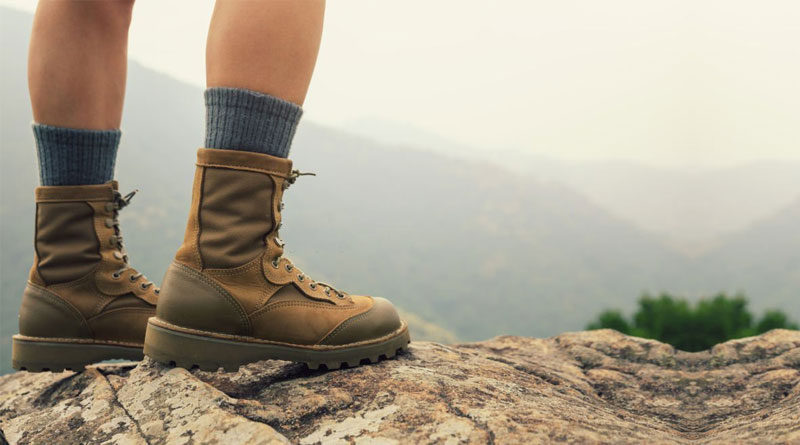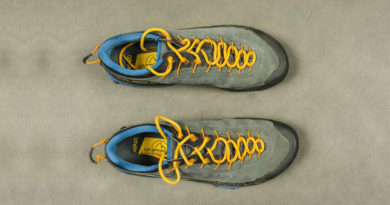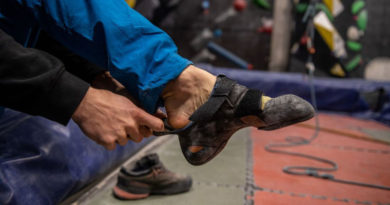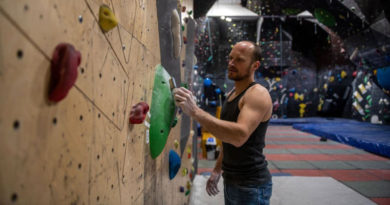How Should Mountaineering Boots Fit?
A properly fitting pair of mountaineering boots is essential for safety, comfort, and success on any mountain adventure. A properly fitting pair of boots means the difference between a successful and enjoyable and a painful and dangerous experience. Mountaineering boots should fit snugly but not too tightly. There should be about 1/2 inch (1.5 cm) of space between your toes and the end of the boot. Your heel should not lift when you walk. The boot should also be comfortable when you bend your foot.
When trying on mountaineering boots, make sure your toes have enough room to wiggle without feeling cramped. The heel should be snugly held in place, with minimal slippage to avoid blisters and maintain stability. Make sure you also have enough ankle support to prevent injuries and provide stability on uneven surfaces.
Factors to Consider When Fitting Mountaineering Boots
Before we get into how to fit mountaineering boots, it’s vital to think about the numerous aspects that go into getting the appropriate fit:
Foot Shape and Size
The first step in selecting the right pair of mountaineering boots is determining your foot shape and size. Because the condition of your feet changes over time. It’s critical to measure them before selecting the pair of mountaineering boots to get the correct size. Measuring your feet is simple. You can do it at home with a normal measuring tape. Place the measuring tape around your foot. Measure the distance between the heel and the end of your longest toe.
Our feet tend to swell at the end of the day. So, measure them in the evening when they are at their largest. Take measurements of both feet because they may not be the same size. After you’ve taken your measurements, use a sizing guide to discover the best size for you.
Arch Support
Arch support is crucial for preventing fatigue and injury on long hikes and climbs. Look for boots that have good arch support and are designed for your specific foot shape. Some brands offer boots with adjustable arch support. The adjustable arch support allows you to customize the fit according to your arch size. Arch support boots will have a slightly curved contour and should be snug but not too tight. You can assess the arch support of the boots by gently pressing down on the midfoot area. If the arch collapses, the boots may not provide adequate foot support.
Ankle Support
Good ankle support is also essential for a comfortable and safe climb. Look for boots that have high ankle cuffs to provide support and prevent twisting and sprains. The cuff should fit snugly around your ankle. But it shouldn’t be too tight because it will restrict movement. Ankle support also prevents injuries especially when climbing over uneven terrain. You can test the ankle support by gently wiggling your toes and moving your ankle up and down. If you are experiencing any slippage or discomfort, this means that your boots are not providing enough support for your ankles.
Toe Room
You also need enough toe room in your mountaineering boots. It helps prevent blisters and promotes proper circulation. The toe room varies from brand to brand, so try on several pairs to get the right fit. When trying on mountaineering boots, you should be able to freely wiggle your toes without feeling restricted or uncomfortable. Also, consider the thickness of the socks you will be wearing. Sock thickness will impact the toe room of your boots.
Comfort and Flexibility
Comfort is essential when it comes to choosing mountaineering boots. Look for boots with a padded footbed and tongue to reduce pressure points and provide cushioning. Your feet and ankles also need flexibility so they can move freely to accommodate the varying terrain on a mountain. Look for flexible boots that offer enough support to keep your feet and ankles secure. Boots that are overly stiff or rigid can also cause discomfort. Before taking your boots to the mountain, wear them for a shorter time to get a sense of how they move with your feet.
How to Ensure a Proper Fit?
Once you have found the right pair of boots, there are a few steps you can take to ensure a proper fit:
Break in New Boots
Breaking in new boots is important to ensure a comfortable fit. Start by wearing your boots for short periods of time and gradually increasing the duration of wear. A short hike will help your boots to conform to the shape of your feet and reduce the risk of blisters.
Use Proper Lacing Techniques
Proper lacing techniques can also impact the fit of your boots. Make sure to lace your boots snugly but not so tight or it will restrict circulation. Consider using a lacing technique that provides additional support, such as crisscross lacing or a lock lacing system.
Adjust the Fit for Different Conditions
The fit of your boots may need to be adjusted for different conditions. For example, in cold weather, we usually wear thicker socks. So, your boots should allow enough room to accommodate a thick pair of socks. Make sure to adjust the fit of your boots accordingly to ensure comfort and prevent discomfort or injury.
Maintain the Fit over Time
Finally, it is important to maintain the fit of your boots over time. Store your boots properly, and consider using a boot insert or moldable footbed to maintain the shape and fit of your boots. Inspect your boots for any signs of wear or damage. Replace them when necessary to ensure the best possible fit and comfort.
Conclusion
So in conclusion, choosing the correct pair of mountaineering footwear is critical for a safe and successful ascent. When you are fitting boots, consider your foot shape and size, arch support, ankle support, toe room, comfort, and flexibility. Try on different sizes and styles, and test the fit while hiking with socks on. Pay attention to pressure points and hotspots. Proper lacing techniques and frequent maintenance can also help to keep your boots fit over time. Your mountaineering boots can help you undertake any mountain activity with confidence and comfort if they are properly fitted and cared for.




